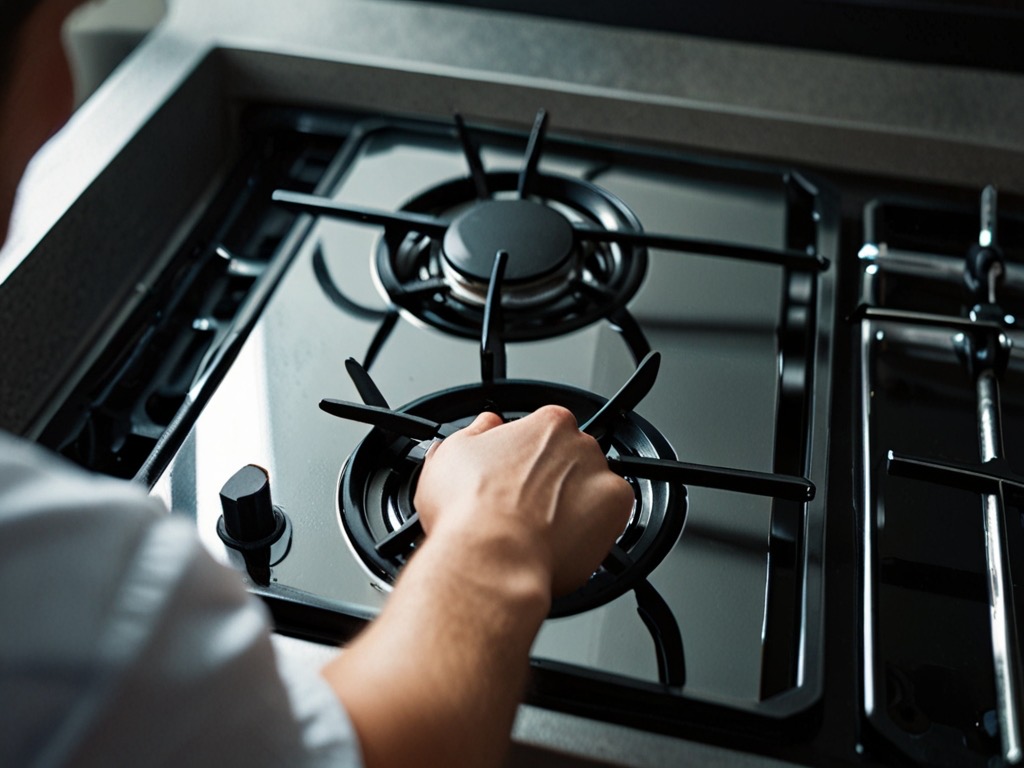In today’s world, where energy costs are rising, and environmental concerns are more pressing than ever, finding ways to reduce energy consumption in our homes is crucial. One area where energy savings can be significant is in the kitchen, especially with appliances like hobs. Whether you’re using an electric, gas, or induction hob, there are several strategies to make your cooking more energy-efficient, helping both the planet and your wallet.
- Choose the Right Hob for Energy Efficiency
⠀
When purchasing a hob, it’s essential to choose one that suits your cooking needs and offers high energy efficiency. Let’s break down the most common hob types and their energy efficiency:
⠀
– Electric Hobs: Traditional electric coil hobs are among the least energy-efficient as they take longer to heat up and cool down. Radiant hobs, which use a smooth ceramic surface, offer slightly better efficiency, but they still lag behind other modern technologies.
⠀
– Gas Hobs: While gas hobs are popular for their precision in heat control, they can waste energy because much of the heat escapes around the sides of the pan. However, gas hobs are quick to heat up and cool down, which helps reduce cooking time, improving their overall efficiency compared to older electric models.
⠀
– Induction Hobs: The most energy-efficient option on the market, induction hobs use magnetic fields to directly heat the pan rather than the hob surface. They have nearly 90% efficiency rates, meaning less energy is wasted during cooking. Induction hobs also offer quick temperature adjustments and precise control.
⠀
- Use the Right Cookware
⠀
The type of cookware you use plays a vital role in energy efficiency. Here are some tips for maximizing your hob’s performance:
⠀
– Flat-Bottomed Pans: Pans with flat bottoms ensure even contact with the hob surface, reducing heat loss and improving cooking efficiency. Warped or uneven cookware can cause heat to escape, making your hob work harder and use more energy.
⠀
– Size Matters: Using the correct size of cookware for your hob burners is essential. If a pan is too small for the burner, heat escapes around the sides, wasting energy. If it’s too large, the pan may not heat evenly. Matching the size of your pot or pan to the hob burner helps you get the most out of your energy use.
⠀
– Materials: Cookware materials such as copper or aluminum are excellent conductors of heat, which means they require less energy to cook. Stainless steel and cast iron are also good, but they retain heat longer, which may cause overcooking if not monitored properly.
⠀
- Adopt Energy-Saving Cooking Techniques
⠀
Being mindful of how you cook can also help lower energy consumption:
⠀
– Lid On, Heat Down: Always cook with lids on your pots and pans. This traps heat and reduces the time it takes to cook, which means you can use less energy. Additionally, reduce the heat once the food reaches a simmer. Most recipes don’t require high heat to continue cooking.
⠀
– Preheat Smartly: If you’re using an electric hob, avoid unnecessary preheating. Electric hobs take time to reach the desired temperature, so use that time to your advantage by starting the cooking process rather than waiting for the hob to heat up fully.
⠀
– Use Residual Heat: With electric and induction hobs, there’s often residual heat left even after you turn off the burner. Take advantage of this by turning off the hob a few minutes before your food is done. This will allow your dish to finish cooking without additional energy consumption.
⠀
– Batch Cooking: Cooking multiple meals at once not only saves time but also energy. By preparing larger portions or multiple dishes, you can make better use of the energy required to heat the hob.
- Maintenance and Cleaning for Efficiency
⠀
A well-maintained hob is more efficient and lasts longer. Make sure to clean and maintain your hob regularly to prevent energy waste.
⠀
– Gas Hobs: For gas hobs, ensure the burners are clean and unclogged. A dirty burner will produce a yellow flame, which is a sign of inefficient burning. A blue flame, on the other hand, indicates proper gas combustion and maximum efficiency.
⠀
– Induction and Electric Hobs: Keep the surface of your induction or electric hob free of dirt, food, and grease. Even a thin layer of grease can interfere with the efficiency of the hob by preventing full contact between the pan and the heating element.
⠀
- Consider Smart Technology
⠀
Modern hobs come with energy-saving technologies designed to reduce consumption without sacrificing performance. Many induction hobs, for example, offer features such as:
⠀
– Boost Functions: This allows you to bring food to a boil quickly and then reduce the heat, minimizing energy consumption.
⠀
– Automatic Pan Detection: Some induction hobs can detect whether a pot or pan is on the hob and will only use energy if cookware is present.
⠀
– Timer and Power Controls: Timers and power settings let you cook with precision and avoid leaving the hob on unnecessarily.
⠀
By investing in a hob with these smart features, you can significantly reduce energy consumption and make your kitchen more eco-friendly.
⠀
Energy efficiency in the kitchen isn’t just about choosing the right hob—it’s also about adopting better cooking practices and maintaining your appliance. Reducing energy consumption can lead to significant cost savings over time, especially with the growing concern over energy prices. Moreover, making your kitchen more energy-efficient helps reduce your carbon footprint, which is crucial for a sustainable future.
⠀
For all your hob maintenance, repairs, or upgrades, trust the professionals at Home Appliance Service Center. Our team is ready to assist you with expert services to ensure your appliances run at peak efficiency. Contact us today to keep your kitchen running smoothly and energy-efficient!
⠀
Contact us
 619-928-5000
619-928-5000  Request Service
Request Service 
